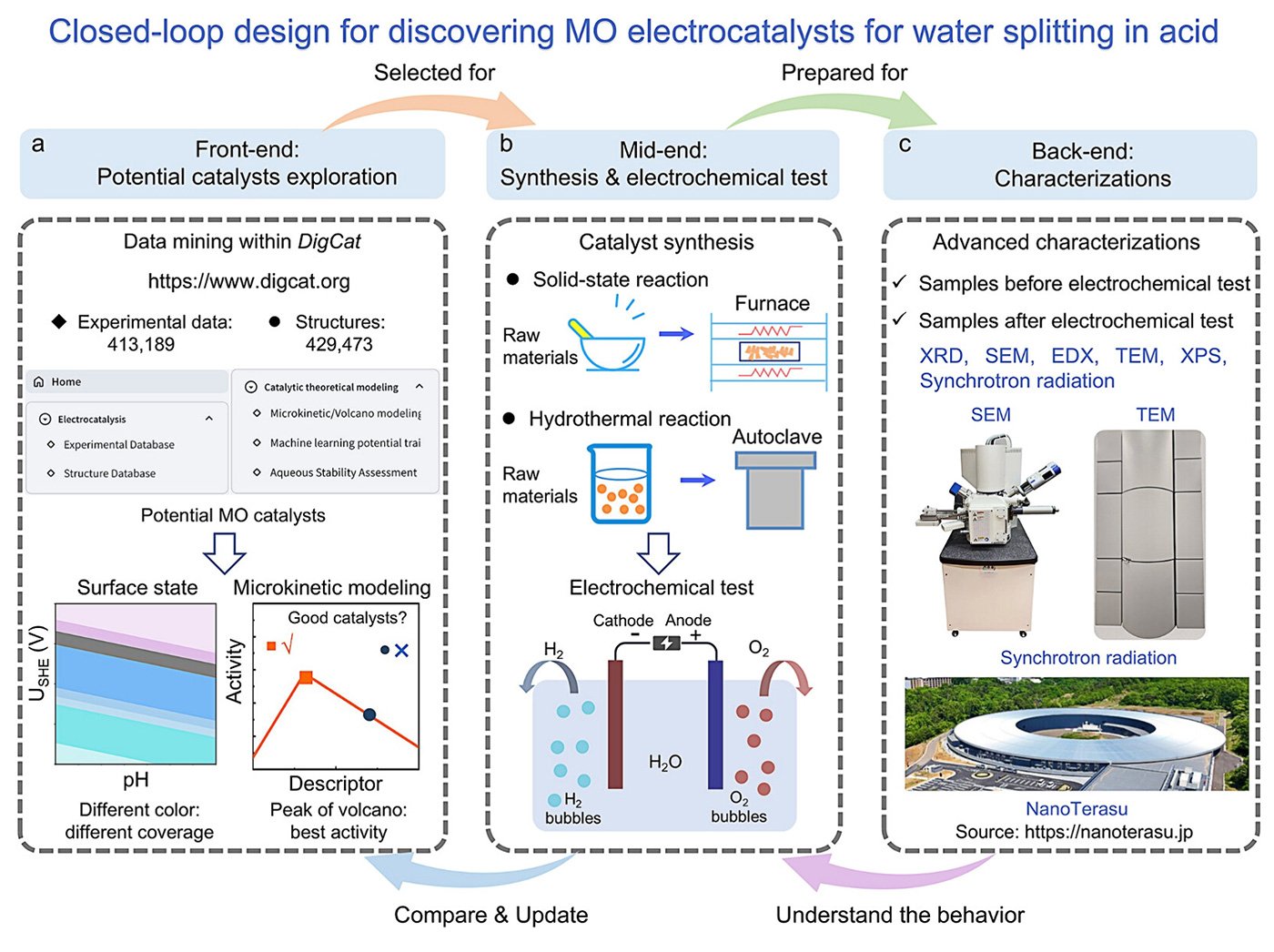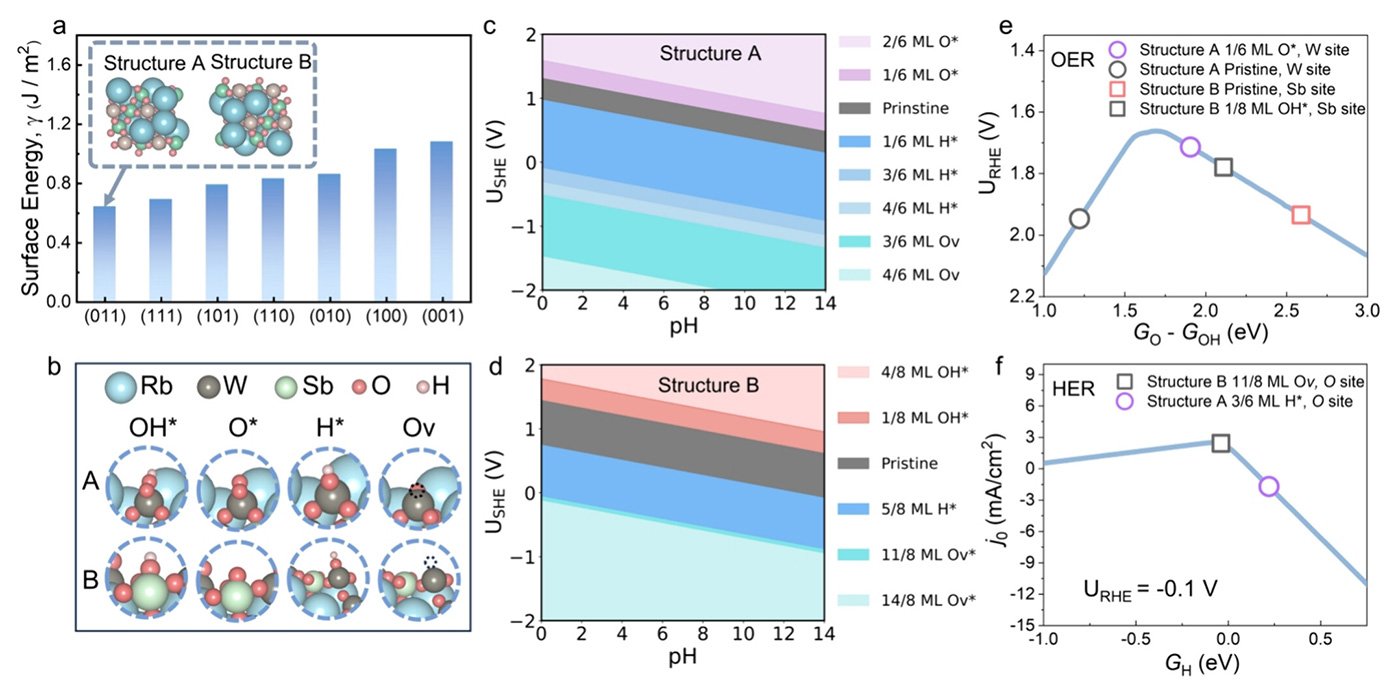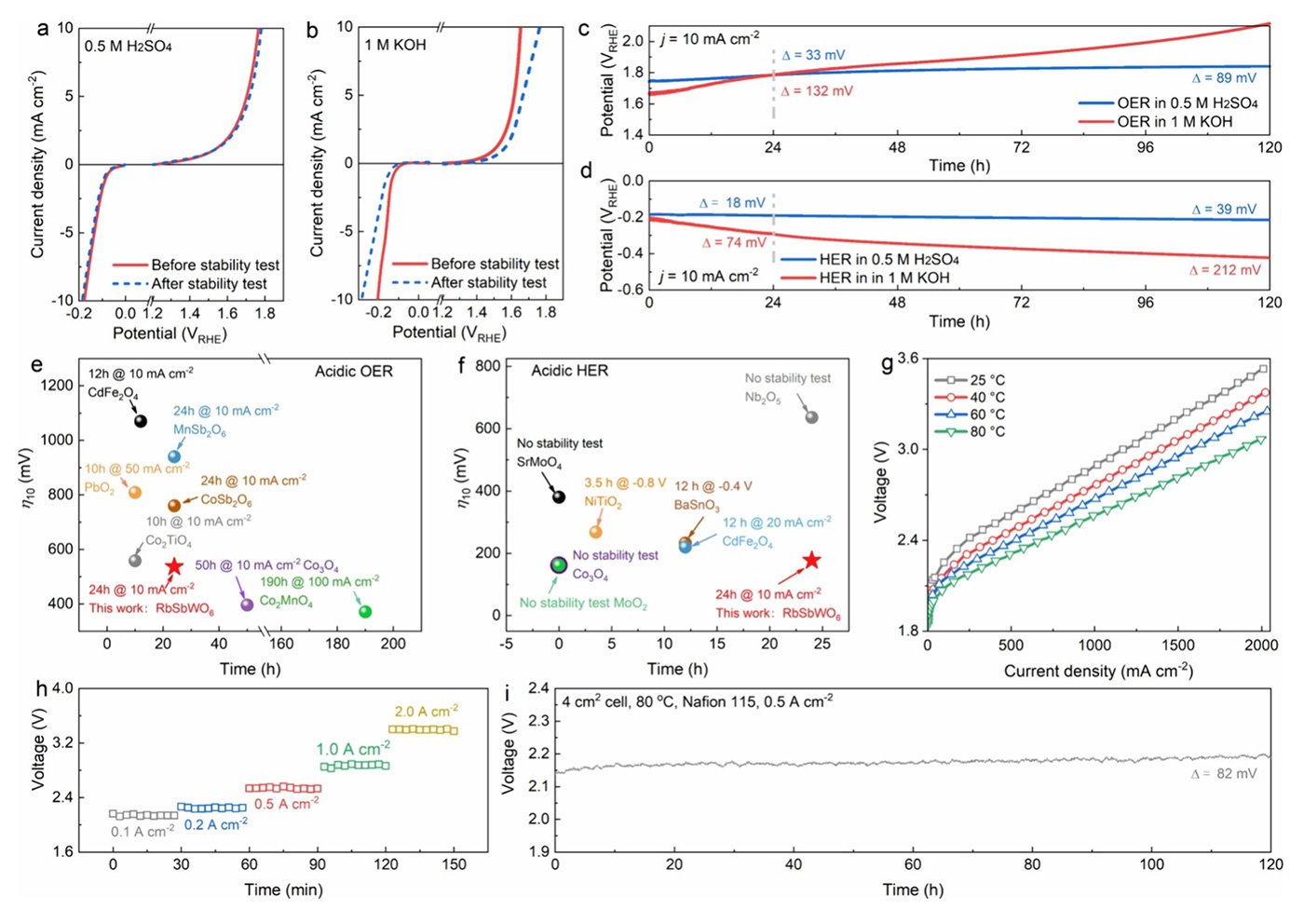A research team has developed a new method to accelerate the discovery of affordable, stable materials that support clean hydrogen production. Their approach could help make hydrogen - a promising clean energy source - more widely accessible by reducing reliance on costly noble metals.
Hydrogen can be produced through water splitting, a process that uses electricity to break water molecules into hydrogen and oxygen. This process involves two key reactions: the oxygen evolution reaction (OER) and the hydrogen evolution reaction (HER). While some metal oxides - compounds made of metals and oxygen - have shown potential as low-cost catalysts, they often degrade in the acidic environments typically used for industrial water splitting.
To address this challenge, the team designed a "closed-loop" research framework that brings together several stages of catalyst development. This includes identifying promising candidates using data analysis, testing their behavior under real operating conditions, and confirming their performance through lab experiments. All steps are connected through a digital system that allows for continuous learning and improvement.

"At the core of our work is a data-driven platform called DigCat," explains Hao Li, a professor at Tohoku University's Advanced Institute for Materials Research (WPI-AIMR). "It helps us efficiently explore a wide range of materials by predicting how their surfaces behave during water splitting, which is often the key to their effectiveness."
Using this approach, the researchers identified a compound called RbSbWO₆ as a particularly promising catalyst. It showed strong performance for both OER and HER in acidic conditions - something that is rare for low-cost, unmodified metal oxides. Notably, the material remained structurally stable even after extended use, a key requirement for practical applications.
The researchers highlight that the entire process - from computer screening to lab validation - demonstrates the power of combining digital tools with experimental work. "We're not just looking for better materials," says Li. "We're also creating a smarter way to find them."

Beyond water splitting, the team's framework can also be adapted to other important chemical reactions, such as converting carbon dioxide into useful fuels or producing ammonia from nitrogen. These reactions are central to sustainable energy and environmental technologies.
The next phase of the research involves expanding the surface-state database and applying the method to other material systems. "By learning more about how surfaces behave during reactions, we can uncover hidden potential in materials that were previously overlooked," says Li. The team hopes that this strategy will accelerate progress toward affordable, efficient solutions for the global energy transition.

- Publication Details:
Title: Closed-Loop Framework for Discovering Stable and Low-Cost Bifunctional Metal Oxide Catalysts for Efficient Electrocatalytic Water Splitting in Acid
Authors: Xue Jia, Zihan Zhou, Fangzhou Liu, Tianyi Wang, Yuhang Wang, Di Zhang, Heng Liu, Yong Wang, Songbo Ye, Koji Amezawa, Li Wei, and Hao Li
Journal: Journal of the American Chemical Society
DOI: 10.1021/jacs.5c04079






